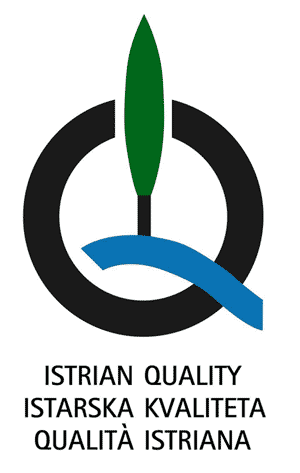
enjoy croatia
Many Istrians conceive wine a inexplicable unearthly sacred potion, a necessity and passion, the culture of living, as nourishment and liquor, prayer and a curse. Istrians have been historically devoted to the grapevine. A proverbial saying confirms it; Wine comes from grapevine and milk from a goat. Wheat is life, while wine is a myth and as our elders would say, The bread is for the flesh and wine is for the soul. Istria, this miniature continent and the largest peninsula of the Adriatic coast, slopes gently into the sea towards the eternally sunny southwest. The wine's bouquet and body is enriched by the special land structure, i.e. the red soil spreading over the littoral and the white soil covering the hinterland area. The vineyards spread over approx.15.200 acres of land. The western viticulture area (in the vicinity of Poreč, Buje, Pula and Rovinj) is the largest, its vineyards covering approx. 14.430 acres. The central Istria wine-growing hills (around Buzet and Pazin) spread over some 516.44 acres, while in the eastern part (near Labin), there are around 255 acres of vine grapes.
Over the past century the Istrian malmsey has born the title of the most famous and ubiquitous wine of our peninsula. Depending on the chemical processing procedure, nurture and vintage year, its color varies from straw to golden yellow. Its scent primarily reminds of the locust flower scent. The contents of its main components make her an average to-full bodied wine, its volume of alcohol ranging from 11.5 to 13.5 with delicate bouquet and fresh taste. It complements most superbly the entire variety of the Mediterranean cuisine. The Istrian counterpart of malmsey is teran. Teran and its subtype refosc are both considered the pristine, indigenous wines of Istria. We tend to call the red wines black, mostly because of teran's intense, deep, ruby color. The local farmer gently whispers, its color is similar to hare’s blood and it can be drunk like milk. Its bouquet is fruit-like and its special taste is easily recognized. It is in excellent harmony with heavier, more caloric dishes, such as local stew, sauces and venison. A great many connoisseurs of Istrian wines will tend to rank the highest the Istrian muscatel or, to be more specific, the muscatel produced in and around Momjan, owing to it’s gold-like color, intense bouquet of wild clove pink and it’s exquisite aroma. Dry and sweet. Worthy complement of desserts and many other delicacies. Even aphrodisiac power has been attributed to it.
Thus we are proposing to you these Istrian Wine Roads in order to make you familiar with our wine-cellars and small wine-vaults. A larger, more explicit symbol (flag) was used to indicate wine-cellars, i.e. the ones offering greater selection of wine, modern technology, a bottled wine assortment. A smaller sign (barrel) was used to mark smaller rural wine-cellars and vaults using traditional vintage methods and offering a more modest selection of not necessarily bottled wine, but nonetheless, of good quality and at a more favourable price. We are convinced that you are about to get lost trying to figure a way to move across our wine roads, but it can happen to us local people as well. Istria is a country of numberless trails and small hamlets; you set out for one hamlet and turn out in another but you needn't worry, there is good wine in there, too. Dear visitors, you are kindly pleased to notify your visit to the wine cellar by phone.

Wine Routes - The touching beauty of Istria is best discovered with a personal oenological adventure on its wine routes. The arrival at each winemaker’s wine cellar leads through beautiful landscapes that enchant with their tales and old buildings. Each of the winemakers, led by zeal and passion, will awaken the hedonistic spirit of the visitors. He will introduce him to the world of the quirky noble liquid with interesting stories, accompanied by wine tastings and gastro/food specialties that enhance the magic in the environment of green vineyards and hot stone.
Wine roads of Buje region / Winegrowers and wine producers of Buje region
Vina Kraljević-Cuj, Armando i Rino Prelac, Moreno Coronica, Moreno Degrasi, Gianfranco Kozlović, Mario Markežić - Kabola, Ivica Matošević, Libero Sinković, Veralda - Luciano Visintin, Otium d.d., Ravalico Filli & Figli, Istravino, Agrolaguna, Vina Cattunar, Clai bijele zemlje - Clai Giorgio, Vinarija Novigrad, Leonardo Palčić, Davor i Boris Škrlj ,Nerino Visintin, Bruno Ferentić, Irineo Celelga Andrea Bassanese, Anđelo Brajko, Vina Cinić - Gambaletto
Wine roads of Porec region / Winegrowers and wine producers of Porec region
Ivan Damjanić, Nelo Coseto, Ivica Matošević, Elvio Kokolo, Agrolaguna, Valter Legović
Wine roads of Buzet / Pazin region / Winegrowers and wine producers of Buzet / Pazin region
Duvilio Zigante, Marko Dešković, Eliđo Pilato, Marijan Arman, Franc Arman, Marino Rossi, Marko Geržinić, Franko Radovan, Peter Poletti, Mario Peršurić, Đordano Peršurić, Livio Benvenuti, Ranko Anđelini, Vianrija Matijašić, Dimitri Brečević - Piquentum, Dorjan Jakac, Damir Sirotić, Dario Sirotić, Adriano Černeka, Vina Visintin - Elvis Visintin, Edo Pincin, Roberto Pulin, Milajnko Matić, Guido Bernobić, Aldo Bernobić, Valter Žiković, Josip Tidić, Miro Petohleb, Sergio Vivoda, Ivan Jermaniš, Diego Nežić, Edvin Petohleb, Anton Grbac, Franko Grbac, Adriano Putinja, Josip Bažon, Renato Krulčić, Podrum Motovun d.o.o Kranjčić, obitelj Paljuh, obitelj Markežić,
Wine roads of Rovinj / Vodnjan region / Winegrowers and wine producers of Rovinj / Pazin region
Dobravac, St. Manegnetti, Igor i Vilim Žužić, Dario Marčeta, Giacometti - Moscarda, Demian - Dejan Milić, Josip Siljan, Bruno Trapan, Podrum Vodnjan, Franco Macan
Wine roads of Labin region / Winegrowers and wine producers of Labin region
Goran Bačac, Florian Radičanin, Vina Zatka, Vina Ružić, Siniša Sergo, Doriano Licul, Romeo Licul,

